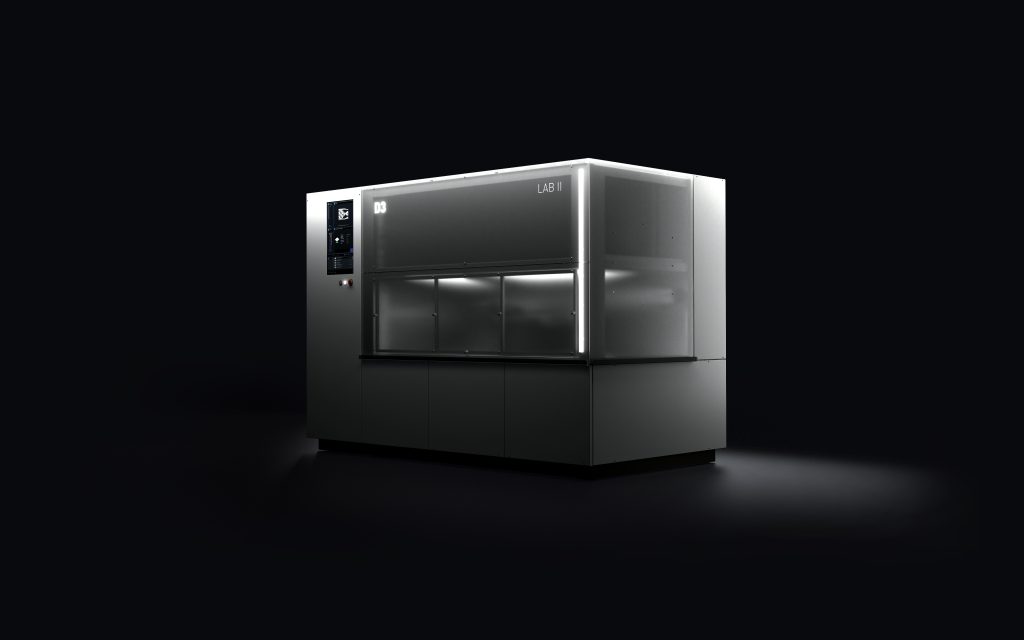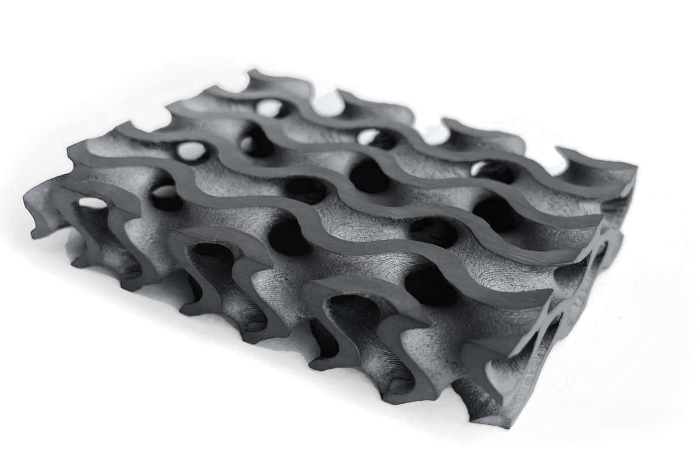Voting closes soon in the 3D Printing Industry Awards 2023. Have your say now!
3D printing company D3-AM has introduced its new Micro-Particle Jetting (MPJ) 3D printing technology at Formnext 2023.
Enhancing additive manufacturing for high-performance ceramics, this technology overcomes limitations linked to traditional inkjet systems. Additionally, D3-AM exhibited components developed from alumina and sintered silicon carbide (SSiC) at the tradeshow in Hall 11.1, Booth F38. Stefan Waldner, Chief Product Officer of D3-AM GmbH said, “Material Jetting, from a theoretical standpoint, represents the most promising technology in additive manufacturing as it enables the construction of objects drop by drop, voxel by voxel. However, the previous material limitations for conventional inkjet print heads have been a significant barrier to market breakthrough. By eliminating material compatibility restrictions, we enable the production of components previously deemed impossible. Our technology has the potential to transform the manufacturing process of the future, from aerospace to the energy transition.”

Reshaping additive manufacturing with Micro-Particle Jetting technology
D3-AM, a startup under the Durst Group, draws on the expertise of its parent company across various industries in digital printing and production technologies. The company is focused on reshaping additive manufacturing through solutions like MPJ, providing practical industrial production options for high-quality components optimized for functional and application-specific areas.
MPJ technology facilitates the direct printing of water-based suspensions, highly concentrated and with a broad spectrum of particle sizes and distributions. This breakthrough eliminates constraints related to material compatibility, enabling the intelligent generation of droplets for the printing of complex, high-quality, and dense components. MPJ’s versatility spans coarse-grained silicon carbide to fine-grained zirconia, opening diverse material development possibilities.

Ceramic 3D printing advancements
Jiangnan University researchers developed a novel support-free ceramic 3D printing technique, detailed in Nature Communications. The method combines direct ink writing and near-infrared (NIR) light-induced up-conversion particle-assisted photopolymerization. A two-step process involves pressure extrusion of ceramic slurry, followed by a 980 nm NIR laser targeting the slurry for immediate in-situ solidification and curing through photopolymerization. This enables the 3D printing of unsupported complex ceramic structures, offering potential applications in machinery, electronics, energy, aerospace, and biomedicine. The method reduces post-processing, improves precision, and lowers material usage, presenting a significant advance in ceramic additive manufacturing.
Meanwhile, Lithoz‘s Lithography-Based Ceramics Manufacturing (LCM) technology is enhancing 3D printing for aerospace applications. High-performance ceramics, known for their hardness and resistance, are gaining prominence as they surpass metal limits under harsh conditions. Lithoz’s CeraFab S65 with LCM enables precise 3D printing of ceramic casting cores for aircraft turbine blades, reducing development time. Its multi-material 3D printers offer flexibility, allowing tailored porosity and complex designs, improving efficiency, and reducing space debris. Lithoz has scaled up production, showcasing the potential for efficient aerospace components like ceramic RF filters and silicon nitride aerospike nozzles.
Read all the 3D Printing Industry coverage from Formnext 2023.
What does the future of 3D printing for the next ten years hold?
What engineering challenges will need to be tackled in the additive manufacturing sector in the coming decade?
To stay up to date with the latest 3D printing news, don’t forget to subscribe to the 3D Printing Industry newsletter or follow us on Twitter, or like our page on Facebook.
While you’re here, why not subscribe to our Youtube channel? Featuring discussion, debriefs, video shorts, and webinar replays.
Are you looking for a job in the additive manufacturing industry? Visit 3D Printing Jobs for a selection of roles in the industry.
Featured image shows D3 LABII, the printing system of D3-AM. Photo via D3-AM.
منبع: https://3dprintingindustry.com/news/d3-am-transforms-the-production-of-high-performance-ceramic-components-with-its-innovative-technology-226246/?utm_source=rss&utm_medium=rss&utm_campaign=d3-am-transforms-the-production-of-high-performance-ceramic-components-with-its-innovative-technology